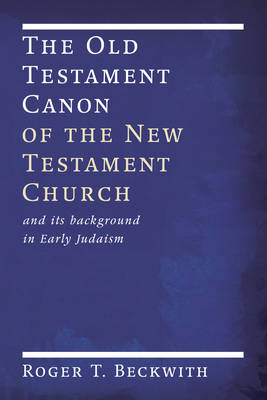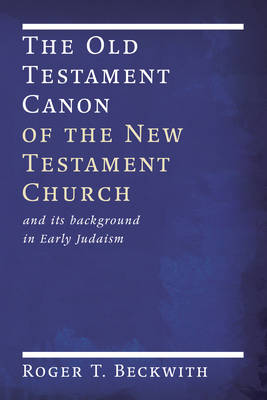
- Afhalen na 1 uur in een winkel met voorraad
- Gratis thuislevering in België vanaf € 30
- Ruim aanbod met 7 miljoen producten
- Afhalen na 1 uur in een winkel met voorraad
- Gratis thuislevering in België vanaf € 30
- Ruim aanbod met 7 miljoen producten
Zoeken
The Old Testament Canon of the New Testament Church
And Its Background in Early Judaism
Roger T Beckwith
Paperback | Engels
€ 108,45
+ 216 punten
Omschrijving
This new study of the Old Testament canon by Roger Beckwith is on a scale to match H. E. Ryle's classic work, which was first published in 1892. But Beckwith has the advantage of writing after the Qumran (and other) discoveries; and he has also made full use of all the available sources, including biblical manuscripts and rabbinical and patristic literature, taking into account the seldom studied Syriac material as well as the Greek and Latin material. The result of many years of study, this book is a major work of scholarship on a subject which has been neglected in recent times. It is both historical and theological, but Beckwith's first consideration has been to make a thorough and unprejudiced historical investigation. One of his most important concerns - and one that is crucial for all students of Judaism, and Christians in particular - is to decide when the limits of the Jewish canon were settled. In the answer to this question lies an important key to the teaching of Jesus and his apostles, and the resultant beliefs of the New Testament church. Furthermore, any answers to questions about the state of the canon in the New Testament period would help to open a way through the present ecumenical (and interfaith) impasse on the subject. With its meticulous research and evenhanded approach, this book is sure to become the starting point for study of the Old Testament canon in the years to come.
Specificaties
Betrokkenen
- Auteur(s):
- Uitgeverij:
Inhoud
- Aantal bladzijden:
- 541
- Taal:
- Engels
Eigenschappen
- Productcode (EAN):
- 9781606082492
- Verschijningsdatum:
- 1/11/2008
- Uitvoering:
- Paperback
- Formaat:
- Trade paperback (VS)
- Afmetingen:
- 152 mm x 226 mm
- Gewicht:
- 748 g

Alleen bij Standaard Boekhandel
+ 216 punten op je klantenkaart van Standaard Boekhandel
Beoordelingen
We publiceren alleen reviews die voldoen aan de voorwaarden voor reviews. Bekijk onze voorwaarden voor reviews.








